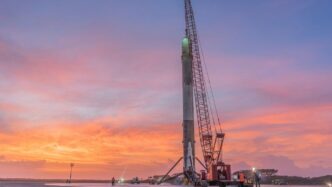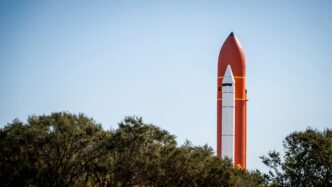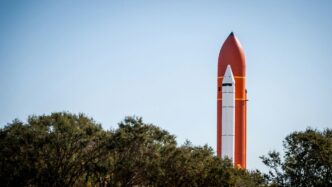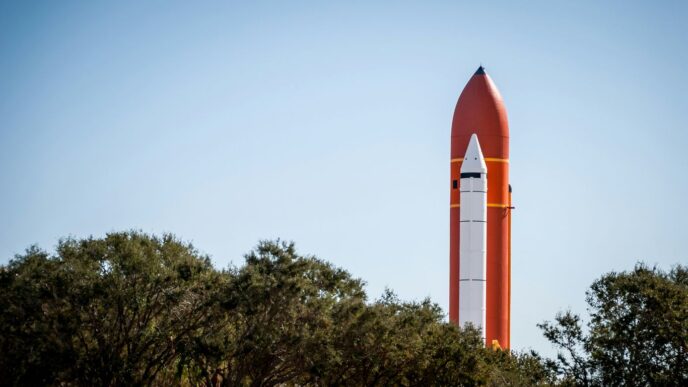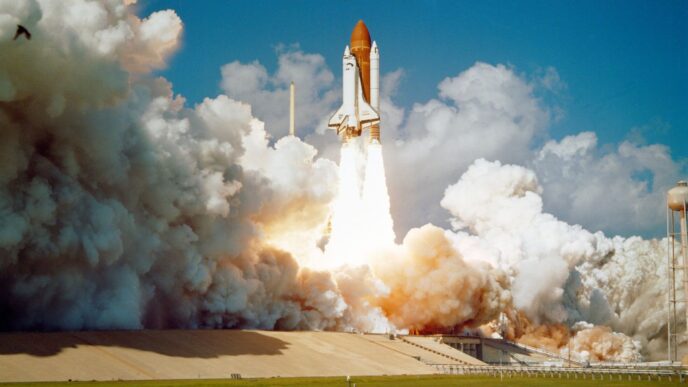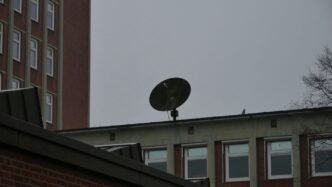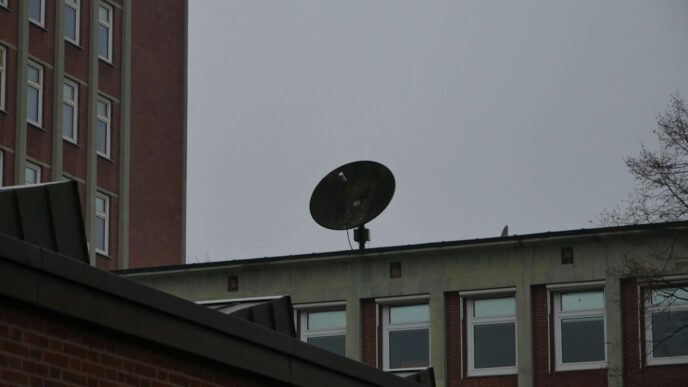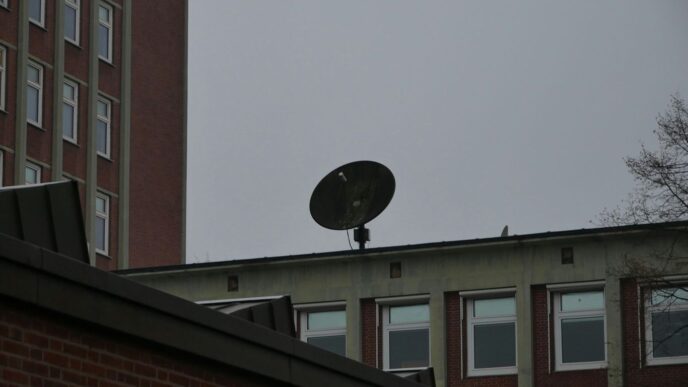Thinking about catching a rocket launch from Cape Canaveral? It’s a pretty amazing sight, and with a bit of planning, you can make sure you see it up close. This guide will help you figure out when and where to go, what to bring, and what to expect when you witness a real cape canaveral launch. Whether you’re there in person or watching from afar, it’s an experience you won’t forget.
Key Takeaways
- Launch dates are often flexible and can change with little notice due to weather or technical checks. Always check the latest schedules.
- Pack smart for launch day: bring sun protection, water, snacks, and something to sit on. Consider earplugs for the sound.
- Popular viewing spots include the Kennedy Space Center Visitor Complex, NASA Causeway, Playalinda Beach, and Port Canaveral.
- Don’t just focus on taking photos; take time to truly experience the sensory event of a liftoff.
- If you can’t make it in person, major launches are usually live-streamed online by NASA and the rocket companies.
Planning Your Cape Canaveral Launch Viewing
So, you want to see a rocket go up? That’s awesome! But let me tell you, it’s not quite as simple as just showing up. You’ve got to do a little homework first. The biggest thing to remember is that launch dates are more like suggestions than firm commitments. Seriously, these things get pushed back for all sorts of reasons – weather, a tiny part not working right, you name it. So, don’t book your non-refundable hotel for a specific date months in advance. It’s better to plan for a few days and be flexible.
Understanding Launch Schedules And Flexibility
Trying to pin down an exact launch date this far out is a fool’s errand. Companies like SpaceX and ULA announce launches, sure, but those dates can shift. It’s like planning a picnic and the weather forecast changes last minute. You’ll want to keep an eye on official sources like the Kennedy Space Center website, NASA’s social media feeds, or sites like Spaceflight Now. They’ll have the most up-to-date info. If you’re really set on seeing a specific launch, plan to be in the area for a few days. That way, if it gets delayed, you don’t miss your only shot.
Essential Items For Launch Day
Okay, so you’ve picked a potential launch window. Now, what do you actually need to bring? Think of it like a day at the beach, but with more fire.
- Sun protection: Sunscreen, hats, sunglasses. Florida sun is no joke, even if it’s cloudy.
- Comfortable seating: You might be waiting for a while. Bring a beach chair or a blanket.
- Snacks and drinks: Food options can be limited or far away, especially if you’re at a more remote viewing spot. Pack more than you think you’ll need.
- Earplugs (optional): For some of the closer viewing spots, the sound of liftoff can be intense. If you’re sensitive, these might be a good idea.
Choosing The Best Viewing Locations
Where you watch from makes a big difference. Some spots get you super close, others are a bit further out but might be easier to access.
- Kennedy Space Center Visitor Complex: They offer official viewing opportunities, sometimes included with tours or as separate tickets. It’s a well-organized way to see a launch.
- NASA Causeway: This is a popular spot, offering a really close view. You can often hear the commentary from mission control here.
- Playalinda Beach: If you’re looking for a more natural setting, this beach is a good option, especially for daytime launches. Just remember it has daytime hours.
- Port Canaveral: This is a decent spot, especially for night launches, and it’s free. But it can fill up fast, so get there early if you choose this one.
Each location has its own vibe and amenities, so check what works best for your plan. And remember, even if you buy tickets for a specific viewing spot, if the launch gets postponed, you might need to buy new tickets for the rescheduled date. It’s a bit of a gamble, but seeing a rocket take off is totally worth it.
Experiencing A Cape Canaveral Launch
There’s really nothing quite like seeing a rocket lift off from Cape Canaveral. It’s a whole sensory experience, you know? You hear the countdown, and then there’s this intense rumble that starts deep in your chest. The sheer power of liftoff is something you feel as much as you see. It’s not just a visual spectacle; it’s a physical event that shakes the ground beneath you.
When you’re there, it’s easy to get caught up trying to get the perfect photo or video. But honestly, for your first launch, just try to soak it all in. Put the phone down for a bit and just watch the rocket climb higher and higher into the sky. The sound builds, and the sight of it against the blue is pretty unforgettable. You can always look at pictures later, but that feeling of being there? That’s special.
If you can’t make it to the Space Coast in person, don’t worry. Most of the major launches are broadcast live online. You can catch these live webcasts from NASA or the specific rocket companies. It’s a great way to still be a part of the excitement from wherever you are. You can find these streams on various space news websites, often linked directly from the Kennedy Space Center Visitor Complex website.
Here are a few things to keep in mind for the best experience:
- Be Prepared for Delays: Rocket launches are famous for being rescheduled. Weather or technical issues can push a launch back, sometimes with very little notice. It’s wise to have some flexibility in your plans.
- Pack Smart: Bring essentials like sunscreen, hats, water, and snacks. Depending on how close you are, earplugs might be a good idea for the intense sound.
- Choose Your Spot Wisely: Different viewing locations offer different perspectives and experiences. Some spots are closer but might have limited amenities, while others are further away but more comfortable.
Key Launch Sites At Cape Canaveral
So, you want to see a rocket go up, huh? Cape Canaveral is the place to be, but knowing where to park yourself is half the battle. It’s not just one big open field; there are a few spots that give you the best view, and some are better than others depending on what you’re after.
Kennedy Space Center Visitor Complex
This is probably the most organized way to catch a launch. The Visitor Complex often offers official viewing opportunities. Sometimes, tickets are bundled with a tour, and other times you’ll need to buy them separately. They usually run buses from the complex to specific viewing areas, like the Apollo/Saturn V Center or the LC-39 Observation Gantry. The gantry can get you pretty close, sometimes even closer than the media! It’s a good bet if you want commentary and a structured experience. Just remember, they only share official launch info, and dates can change, so keep an eye on their alerts.
NASA Causeway Viewing
If you’re lucky, you might be able to snag tickets for viewing from the NASA Causeway. This spot is known for being really close to the action, and it’s where a lot of news crews set up. You get a great view and live audio from mission control. It’s a prime location, so tickets, if available, can go fast. It’s a solid choice for feeling the rumble and seeing the fire up close.
Playalinda Beach And Port Canaveral
Looking for something a bit more laid-back? Playalinda Beach is a good option, especially for daytime launches. It’s a few miles from the launch site, so you get a decent view without being right in the middle of everything. For night launches, Port Canaveral is often recommended. It’s near the cruise ship terminals, and while it can get crowded, it’s a popular spot for those who didn’t get official tickets. You’ll want to get there early to snag a parking spot, as it fills up quickly. These spots offer a more public, less structured way to witness the spectacle. Other areas along Route 528 might also work if you’re willing to pull over, but these are generally considered the best public viewing points.
Upcoming Cape Canaveral Launch Missions
Cape Canaveral is buzzing with activity, and there are some seriously exciting missions on the horizon. It’s always a good idea to keep an eye on the schedules because, let’s be honest, space launches are notorious for shifting dates. Things can change right up until the last minute, so checking official sources is key.
SpaceX Falcon 9 Missions
SpaceX continues to be a major player, with their workhorse Falcon 9 rocket scheduled for several upcoming flights. These missions often involve resupplying the International Space Station with their Dragon spacecraft, but they also carry a variety of commercial and government satellites into orbit. Keep an eye out for cargo runs to the ISS and satellite deployments, as these are frequent occurrences.
United Launch Alliance Atlas V and Delta 4
United Launch Alliance (ULA) is also gearing up for important launches with their reliable Atlas V and Delta 4 rockets. These vehicles are often tasked with deploying national security payloads and complex scientific missions. ULA’s launches are typically high-stakes, carrying critical assets for defense and exploration.
Future Crewed Missions
The real buzz, though, is around the upcoming crewed missions. Following successful test flights, we’re looking at more astronauts heading to the International Space Station aboard commercial spacecraft. This marks a new era of human spaceflight, with private companies playing a significant role in getting people to orbit. It’s a huge step forward, and witnessing one of these crewed launches is something else entirely.
The Gateway Deep Space Launch Complex
Exploring Visionary Spacecraft Designs
Stepping into Gateway: The Deep Space Launch Complex feels like walking into the future. It’s not just about rockets that have already flown; this place really digs into what’s next. You’ll see mock-ups and designs for spacecraft that are still just ideas, but they’re ideas that could take us to Mars and beyond. It’s pretty wild to see how different these future ships look compared to what we have now. They’ve got models of things like the Boeing Starliner, giving you a peek at how we might travel in the coming years. This exhibit is all about sparking imagination for what space travel could become.
Innovations From NASA and Commercial Partners
Gateway does a great job of showing how NASA isn’t the only player in space exploration anymore. They highlight a lot of the cool stuff happening with private companies, too. You can check out actual hardware, like the SpaceX Falcon 9 rocket that’s suspended overhead – it’s way bigger up close than you might think. They also have details about missions like Inspiration4, and you can even see Jared Isaacman’s actual suit from that mission. It’s a tangible link to recent achievements and shows the collaborative spirit pushing space exploration forward.
Iconic Rockets on Display
When you visit Gateway, you’re going to see some seriously impressive hardware. The star of the show for many is the massive SpaceX Falcon 9 rocket, hanging there like it’s ready to launch any second. It really gives you a sense of the scale involved in getting things into orbit. Beyond that, they showcase other significant pieces of spaceflight history and future concepts. It’s a place where you can really appreciate the engineering and ambition behind getting humans off our planet and into the vastness of space. If you’re interested in seeing what it takes to reach orbit and beyond, this is definitely a spot to check out the exhibits.
Don’t Miss the Next Blast Off!
So, there you have it. Watching a rocket launch is a pretty wild experience, and with a little planning, you can totally make it happen. Remember, dates can change, so keep an eye on the schedules and social media for the latest updates. Whether you go in person or catch the livestream from home, it’s something you won’t forget. It’s a real reminder of what we can do when we put our minds to it. Good luck, and happy viewing!
Frequently Asked Questions
When are rocket launches scheduled?
Rocket launch dates aren’t set in stone! They can change often, even at the last minute, because of things like weather or if a rocket needs a check-up. It’s best to check websites like Space.com or the social media pages of the space companies for the most up-to-date information a few weeks before you plan to go.
What should I bring to watch a launch?
Pack smart! Bring things like sunglasses and sunscreen if it’s sunny, a chair or blanket to sit on, and plenty of snacks and drinks since you might be waiting for a while. Some people even bring earplugs because the sound can be really loud up close!
Where are the best places to see a launch?
There are a few great spots. The Kennedy Space Center Visitor Complex often has special viewing areas. You can also try the NASA Causeway for a close view, or Playalinda Beach and Port Canaveral for other options. Just remember, some spots fill up fast, so get there early!
What if I can’t go in person?
No worries! Most major rocket launches are shown live online. You can watch them on NASA’s website or the websites of the companies launching the rockets. It’s a great way to see the action from home.
Should I focus on taking photos or enjoying the launch?
For your first launch, try to just soak it all in! It’s an amazing experience to see and feel. Professional photographers will capture all the best shots, and they’ll be shared online quickly. Enjoy the moment rather than stressing about getting the perfect picture.
What kind of rockets can I expect to see launching?
You’ll often see rockets like SpaceX’s Falcon 9 and Falcon Heavy. United Launch Alliance also launches rockets like the Atlas V and Delta 4. There are also plans for future missions that will carry astronauts, which are really exciting to watch!

